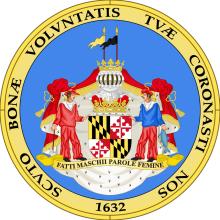
With $3.9 billion from the American Rescue Plan Act on its way to Maryland, Gov. Larry Hogan and state legislative leaders have agreed to seize the moment, allocating $300 million of federal COVID-19 relief funds to expand broadband infrastructure and digital inclusion initiatives across the state.
The biggest bulk of the money – $97 million – will go towards funding the building of physical infrastructure with $45 million earmarked specifically for municipal broadband grants.
“The question isn’t how much it’ll cost to bridge the digital divide, the question is how much will it cost if we don’t act right now,” State Senate President Bill Ferguson said at a press conference when the funding was announced.
The bipartisan budget agreement was hailed by Gov. Hogan, a Republican, as an example for the nation demonstrating how “people from different parties can still come together, that we can put the people’s priorities first, and that we can deliver real, bipartisan, common sense solutions to the serious problems that face us.”
One “serious problem” in Maryland, according to a recent Abell Foundation report, is that 23 percent of Maryland households (520,000) do not have a wireline home Internet connection, 40 percent (or 206,000) of which are Black households.
Much of that comes from a lack of affordability and other barriers to adoption. To deal with those challenges, the budget agreement also includes $45 million to subsidize monthly Internet service costs for qualifying families and $30 million to pay for Internet-connected devices for financially eligible households. It also includes an additional $4 million for a new University System of Maryland program to support training and developing curriculum to bridge the digital divide as well as $2 million for digital navigator programs.
Here is an itemized breakdown of where Maryland’s $300 million investment in broadband will be directed:
Physical infrastructure
- $97M for broadband infrastructure and deployment
- $5M to support local community-based solutions and gap networks
- $23M for rural broadband and digital connectedness
- $30M for broadband infrastructure and deployment in rural parts of the state
- $5M in grants and loans to local governments to support private providers in improving broadband access
- $45M for municipal broadband grants
Affordability
- $45M to subsidize monthly broadband service fees
- $30M for technology devices for qualified Maryland households
Adoption
- $4M for a new University System of Maryland division to support, train, and develop curriculum focused on bridging the digital divide
- $2M for digital navigator programs
- $2M for digital inclusion fund
This all comes as the state lawmakers recently passed two companion broadband bills (SB 66 and HB 97), known as the Digital Connectivity Act, which expanded the state’s Office of Rural Broadband and transformed it into the Office of Statewide Broadband to oversee infrastructure expansion and better coordinate the affordability and adoption challenges associated with addressing the digital divide – a reflection of the fact that broadband access is not only an issue in rural areas but urban centers as well.
Applause from Broadband Advocates
Claudia Wilson Randall, Executive Director of the Community Development Network of Maryland (CDN) – the organization that commissioned the Abell Foundation report and a leading voice for expanded investment in broadband – told Technical.ly she was pleased the governor and state lawmakers were responsive to what broadband advocates have been working for years now to advance.
“I’m excited because the state heard that message from everyone that in order for us to get an equitable recovery for the state, we’ve got to address this,” she said.
John Horrigan, a Senior Fellow at the Technology Policy Institute and author of the Abell Foundation report, underscored how a lack of high-speed Internet connectivity goes far beyond focusing efforts of expanding broadband in only rural communities.
“The new proposal from the state of Maryland helps Baltimore through significant funding for subsidies for monthly Internet services and computing devices for low-income households. Baltimore’s digital divide, in terms of subscriptions to service at home, is the largest in the state, so the proposed funding to support adoption has the potential to make a big difference in the city,” Horrigan told Technical.ly.
It is not clear to us whether the U.S. Treasury Department’s recently published interim rules on how federal broadband funds in the American Rescue Plan should be allocated will affect Maryland’s plans. But, for those living in states that have yet to make significant investments in expanding high-speed Internet connectivity, the Old Line State is a leading light on transforming itself into becoming an Online State.








